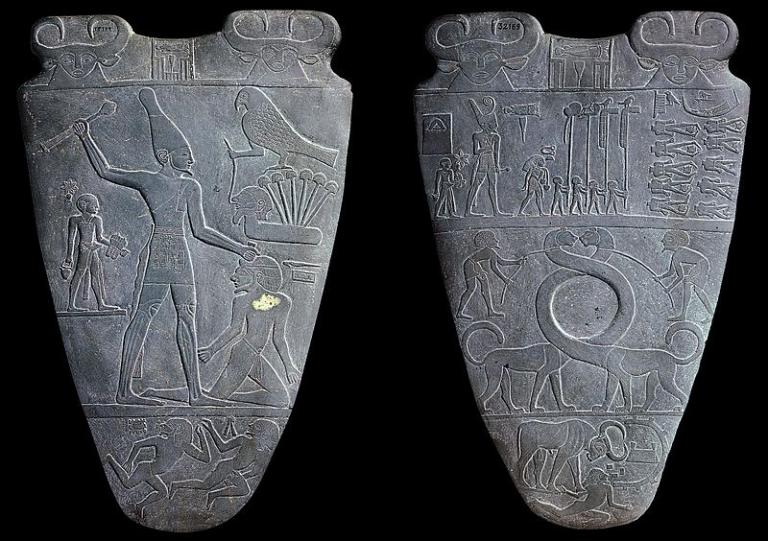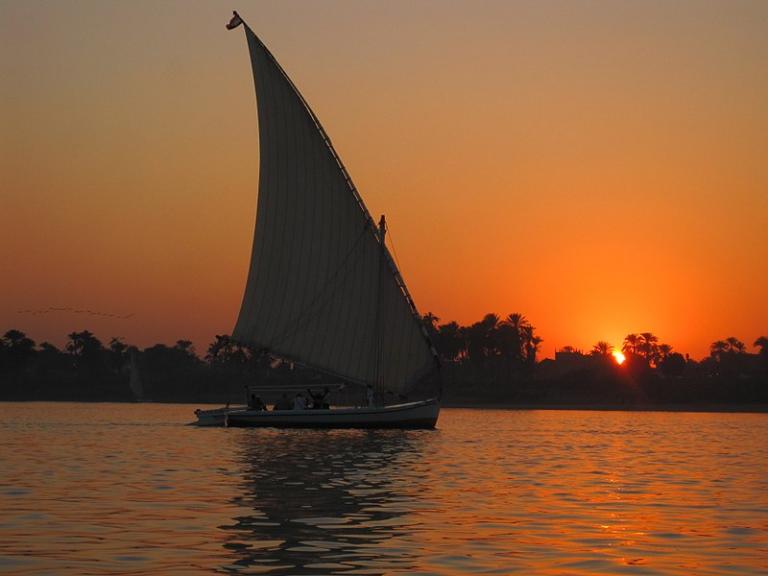
I’m deeply saddened to pass on the news, which I received only just now, that Kent Budge, a Caltech-trained computational physicist who worked at Los Alamos National Laboratory in New Mexico and who (in recent years as dCyl) commented here from time to time — very helpfully and sanely, I might add — has passed away. As I understand it, his death (on Wednesday night, I think) came as a result of complications from injuries sustained several months ago in a very serious automobile accident. We’ve lost a very good mind and a devoted Latter-day Saint.

As I’ve noted, the WiFi aboard our Nile cruise boat, usually terrible to non-functioning, was completely absent this time around. So here’s something that I put together on Tuesday, 8 November 2022, but was unable to actually post until now:
Today was a relatively relaxing day. Because some of its passengers needed to return from a trip down to the magnificent temples of Abu Simbel, our boat got a late start. Yesterday, by contrast, we were obliged to be on the bus by two o’clock in the morning in order to catch our flight down to Aswan, the southernmost city of Egypt.
As I write, we’re cruising northward on the Nile—which is to say, downstream—between Aswan and the temple city of Kom Ombo. It’s peaceful. The water is broad, blue, and smooth. The sun is beginning to set, and the banks of the river, with their sharp contrast of green vegetation and golden desert, are especially lovely.
One of the more counterintuitive facts about Egypt, something that often takes people a little bit of time to wrap their minds around, is that Upper Egypt is in the south and that Lower Egypt is in the north. (These were the two separate regions that were united by Narmer or Menes in the most ancient Egyptian past — somewhere during the interval between 3300 BC and perhaps a little after 3000 BC, thus well before the building of the pyramids. But Egyptians were always aware of the distinction between Upper and Lower Egypt—they still are very aware of it—and even the familiar “double crown” of the pharaohs reflected the remembered division.) That’s opposite to what people would typically assume. The reason, of course, is that the Nile flows from south to north, meaning that the southern part of Egypt is (rather slightly) more elevated than is the northern part.
As I mentioned here yesterday, Jewish military colonies served as mercenary garrisons during the fifth century before Christ at various locations in Persian-occupied Egypt. The most famous of them was located on Elephantine Island, directly opposite the ancient city of Syene (modern Aswan), where it guarded Egypt’s southern border. (The name “Elephantine” reflects the importance of Egypt’s ancient ivory trade with inner Africa.) Most scholars believe that the colony at Elephantine was originally founded around 600 BC, by Jews fleeing the military expansion of the Babylonian Empire—just as their contemporary, the Book of Mormon’s Lehi, did.
Surprisingly, as I’ve noted, the Aramaic-speaking Jews of Elephantine eventually built their own temple outside of Jerusalem, just as the Nephites had. It was dedicated to “Yahu” or “Yaho,” a variant form of the name “Yahweh” (“Jehovah”). But two other Aramaic-speaking communities also lived in the area, religiously foreign but fairly close culturally: A group from Syria had a temple for Bethel and the “Queen of Heaven” in Syene and, nearby, a group of Babylonians had built temples for Nabu and Banit.
Papyrus Amherst 63 was discovered along the Egyptian Nile at Luxor (ancient Thebes) in the late 19th century, roughly five hundred miles south of the Mediterranean. For multiple reasons, although its title isn’t particularly gripping, Papyrus Amherst 63 is one of the more interesting documentary finds from the ancient Middle East. Certainly it is so from a Latter-day Saint perspective.
The papyrus is made up of about thirty-five literary texts in the Aramaic language (a near-cousin of Hebrew). They appear in four sections, followed by an appendix in the form of a “court novella” about the Assyrian king Assurbanipal and his brother. The first three sections contain ritual texts from the Babylonians, the Syrians, and the Jews, in that order. The fourth section is surprisingly ecumenical, often equating one god with another (e.g., Yahweh with Bethel), as if the three communities were trying to create common religious ground. (Compare the apostle Paul’s use of a pagan poem about Zeus in Acts 17, as if that poem referred to the biblical God; see “God’s sheep recognize his voice” https://www.deseretnews.com/article/705387043/Gods-sheep-recognize-his-voice.html.)
All five of the gods who had temples at Elephantine and Syene appear in Papyrus Amherst 63; for that reason, I think it reasonable to conclude that the text was almost certainly compiled in that region by people belonging to those communities.
It contains three Israelite psalms, only one of which– a variant form of the biblical Psalm 20:2-6—corresponds to anything in the Bible. (A Latter-day Saint will think immediately of the teaching of the Book of Mormon that elements of the biblical text would be lost in transmission.) “The three psalms clearly belong together,” says the Dutch scholar Karel van der Toorn. Among other things, they seem to have been originally composed in Hebrew and they all celebrate “Yaho” as the king of the gods. They “go back,” says van der Toorn, “to Hebrew hymns that must have been written in the eighth century at the latest.”
Curiously, though, the scribes who recorded them in Papyrus Amherst 63, most likely (according to handwriting experts) in the fourth century B.C., did so in Demotic—a cursive and relatively late Egyptian script—rather than in the customary Aramaic or Hebrew script. This delayed their decipherment for more than 120 years; although the script was clear enough, it seemed to be meaningless gibberish to the Egyptologists who studied it until they realized that the language of the underlying text wasn’t Egyptian at all.
Many Latter-day Saint scholars believe the Book of Mormon to have been written in Hebrew or something very like it, but in an Egyptian script, and they have have long pointed to Papyrus Amherst 63 as evidence of an ancient biblical text that was recorded in precisely that way. (See, for example, William J. Hamblin, “Reformed Egyptian” (https://publications.mi.byu.edu/fullscreen/?pub=1461&index=6).)
Professor van der Toorn says of the three Amherst psalms that “These were songs the Israelites chanted before their religion turned monotheistic.” Thus, rather like biblical Psalm 82:1, Yaho is described not as a solitary figure but as the highest of the Gods, the head of a “council of heaven.”
Karel van der Toorn, “Egyptian Papyrus Sheds New Light on Jewish History,” Biblical Archaeology Review (July/August 2018): 32-39, 66-68, prompted this blog entry, which draws substantially from it. On Yahweh as the head of a “heavenly council” rather than as the isolated deity of later monotheism, see Daniel C. Peterson, “Ye Are Gods: Psalm 82 and John 10 as Witnesses to the Divine Nature of Humankind” (https://publications.mi.byu.edu/fullscreen/?pub=1091&index=17).
On the River Nile, in Upper Egypt
Posted from Paris, France










